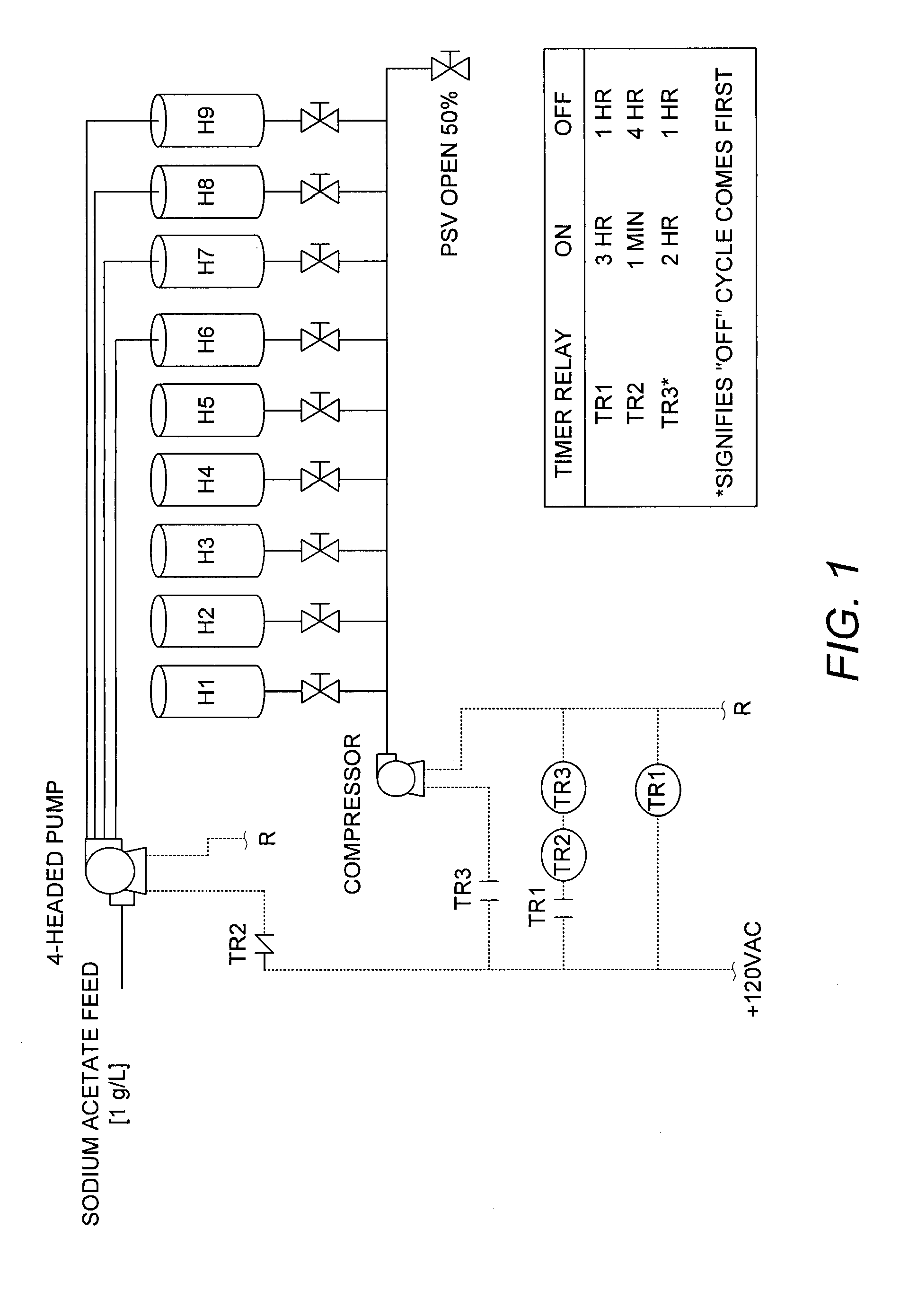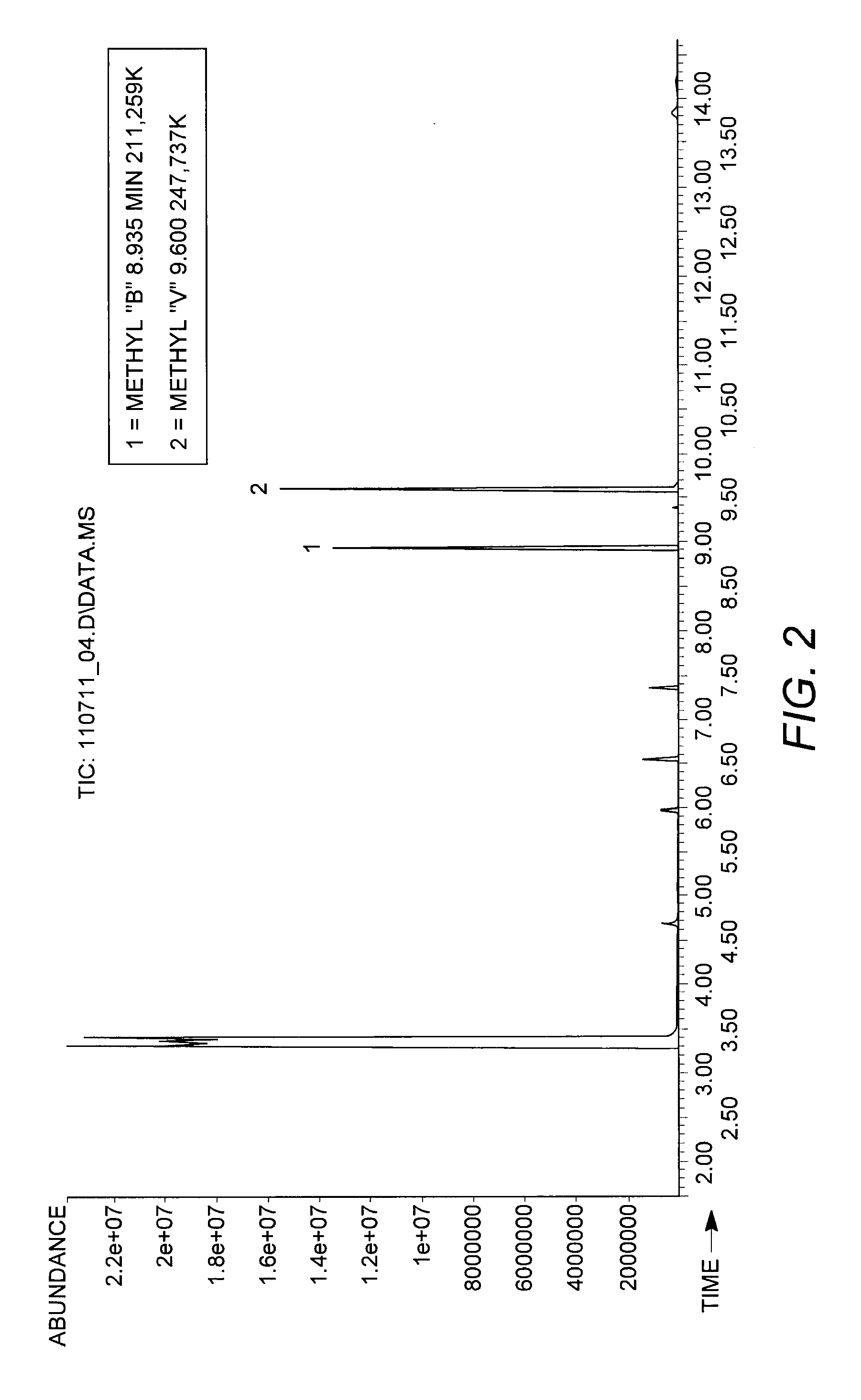Pha-producing bacteria
a technology of pha-producing bacteria and bacterial strains, which is applied in the field of pha-producing bacteria, can solve the problems of pha-based plastics degrading quickly without any harmful effects, affecting the recovery of cells, and reducing the number of bacteria in the field, so as to promote cell recovery, reduce contamination, and promote cell recovery
- Summary
- Abstract
- Description
- Claims
- Application Information
AI Technical Summary
Benefits of technology
Problems solved by technology
Method used
Image
Examples
example 1
Enrichment and Isolation of PHA-Accumulating Bacteria
[0129]This example relates to the enrichment and isolation of a PHA-accumulating bacterial strain using a two stage process that includes use of a sequencing batch reactor and fluorescent colony screening.
Introduction
[0130]Sequencing batch reactors (SBRs) are the most commonly employed tool for the development of polyhydroxyalkanoate (PHA)-storing mixed microbial consortia. Two primary configurations exist: aerobic dynamic feeding (ADF) and aerobic / anaerobic (AN / AE) cycling. Both formats typically begin with an activated sludge-derived seed culture and utilize a feast / famine based feeding strategy to encourage the formation of biopolymer storage material.
[0131]ADF bioreactors are constantly aerated and maintain a dissolved oxygen (DO) concentration set-point with the exception of a short settling phase. They manage PHA formation and selective pressure by controlling residence time, feeding rate, and nutrient concentration via the ...
example 2
Characterization of Pseudomonas fuscovaginae PSFU01
[0147]This example relates to the enrichment, isolation, and characterization of the PHA-accumulating bacterial strain Pseudomonas fuscovaginae PSFU01 with ATCC No. [0002].
[0148]Pseudomonas fuscovaginae PSFU01 was isolated from activated sludge that was obtained from a wastewater treatment plant in Fairfield, Calif. The activated sludge was diluted tenfold and spread plated to obtain isolated colonies. Dilution plates were prepared on tryptic soy agar supplemented with sodium acetate (10 g tryptic soy agar (Remel), 5.00 g sodium acetate, 3.00 g agar powder, 1.5 mg Nile Blue A) and screened for colonies showing orange fluorescence as described in Example 1. Wet mount preparations were then checked for refractile inclusions, and Sudan Black B stains were prepared using the same method as described in Example 1 for the preparation of plates from selection reactors. Cultures were then repassaged onto the above agar until pure culture wa...
example 3
Characterization of Pseudomonas pseudoalcaligenes PSA01
[0152]This example relates to the enrichment, isolation, and characterization of the PHA-accumulating bacterial strain Pseudomonas pseudoalcaligenes PSAOlwith ATCC No. [0003].
[0153]Pseudomonas pseudoalcaligenes PSA01 was isolated from activated sludge utilizing the same procedure described in Example 2. Once pure culture was achieved, samples were sent to a sequencing laboratory to be identified by 16S rRNA sequencing as described in Example 1. The 16S rRNA sequence of the Pseudomonas pseudoalcaligenes PSA01 strain is shown in SEQ ID NO: 3. The result of the BLAST search is shown in Table 3 above.
[0154]Cells of the Pseudomonas pseudoalcaligenes PSA01 strain were shaped as straight or slightly curved but not helical rods, with dimensions of 0.5-1.0×1.5-5.0 μm. They were motile with one or several polar flagella. They were aerobic, having a strictly respiratory-type of metabolism with oxygen as the terminal electron acceptor. The ...
PUM
 Login to View More
Login to View More Abstract
Description
Claims
Application Information
 Login to View More
Login to View More - R&D
- Intellectual Property
- Life Sciences
- Materials
- Tech Scout
- Unparalleled Data Quality
- Higher Quality Content
- 60% Fewer Hallucinations
Browse by: Latest US Patents, China's latest patents, Technical Efficacy Thesaurus, Application Domain, Technology Topic, Popular Technical Reports.
© 2025 PatSnap. All rights reserved.Legal|Privacy policy|Modern Slavery Act Transparency Statement|Sitemap|About US| Contact US: help@patsnap.com



